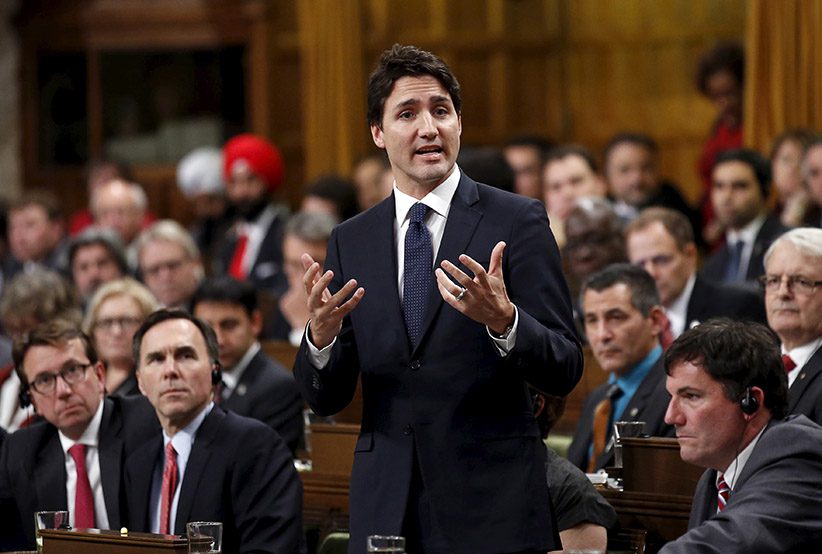This content is restricted to subscribers

The views, opinions and positions expressed by columnists and contributors are the author’s alone. They do not inherently or expressly reflect the views, opinions and/or positions of our publication.

This content is restricted to subscribers
The views, opinions and positions expressed by columnists and contributors are the author’s alone. They do not inherently or expressly reflect the views, opinions and/or positions of our publication.

Alberta Health Minister Tyler Shandro is wading into deep water with his current confrontation with the province's general practitioners over pay.
Armed with volumes of graphs and figures showing the province's doctors are overpaid, Shandro is proposing a fairly major overhaul of physician compensation. A first attempt at voluntary mediation on a new deal between the AMA and the government ended with no joy and the AMA president already mentioning "legal options".
Doctors on the front line are fighting back too, and they're mobilizing patients and public sentiment to undercut the province's assertion that Alberta's doctors are paid too much.
Patients are faced with pleas in doctors offices to sign petitions. Articulate doctors are popping up on open line radio shows and all over social media making their case.
The assumption on which the government's case rests is that Alberta doctors are paid more than doctors in other provinces. The AMA does not agree, either in terms of how much general practitioners make or on whether it is more than in other provinces.
The government argues Alberta doctors make $90,000 more than docs in Ontario.
The AMA pleads the bigger picture: "The amount that Alberta spends on its physicians (just under 23 per cent of total health care budget) is consistent with what other provinces spend on physicians."
The province is proposing a detailed plan for wrestling down the doctors' compensation. On fee-for-service billing, they want to pare back the complex modifier, which pays doctors more for dealing with patients who require more time in their GP's office.
Under the new plan doctors would have to spend 25 minutes with a patient before billing for extra time. They now can start that extra billing at 15 minutes.
Health care advocates argue that could prompt doctors to avoid complex patients, such as seniors and those with chronic conditions.
Another proposal eliminates clinical stipends, a bump up for on-call physicians which is particularly used in rural areas.
Implementation of a couple of the government cost cutting provisions, which actually seemed a bit mean spirited, have already been delayed — a requirement for seniors over 74.5 years of age to pay for their drivers licence physical exam and denial of payments to doctors who don't ensure the patients they are seeing are covered by the provincial health care insurance plan.
Shandro's favoured position on restructuring compensation involves changing the actual payment method. Alberta has a large percentage of doctors using fee for service compensation, being paid for each medical service they perform, which Shandro argues is paperwork heavy and makes budgeting tough for the government.
He wants to up the percentage of physicians on various alternate payment arrangements, such as hourly or annual salaries, fixed per-patient payments or a hybrid of per patients and fee for service.
While some of what he suggests may have merit, the government is outclassed in terms of having an appealing message. The doctors are far better at bringing it down to the grassroots.
An official government Twitter feed tweets out about basic pay for doctors being "a base rate of $38.03 (plus $2.95 from the Business Cost Program) for a total of $40.98. This is the highest rate across main comparator provinces."
The replies, many from doctors, point out that dentists base rates are much higher, that an auto lube job costs way more. One points out that two of the "comparator provinces" cited are having difficulties with doctor shortages.
AMA President Christine Molnar has shown a flair for drama as well.
"It will be physicians who will be up in the middle of the night at 2 a.m. trying to save someone like when the (novel) Coronavirus comes," she told reporters after the latest negotiations broke down.
"It will be us risking our lives on the front lines for any of those things. That's what we signed up for and we're willing to do it but I think that requires a certain level of valuing and respect and acknowledgment. I would like to see the relationship reflect those values."
The way doctors are paid in Alberta is probably overdue for an overhaul. But the government has approached the doctors with a very detailed playbook with little consultation, a pattern that has become the hallmark of provincial budget cuts.
Despite a bit of sabre rattling on both sides, there will be more time spent at negotiation tables on these issues. But general practitioners and their close relationship with their patients shouldn't be underestimated by the government.
The views, opinions and positions expressed by columnists and contributors are the author’s alone. They do not inherently or expressly reflect the views, opinions and/or positions of our publication.

2020 has not been easy for the Justin Trudeau 2.0 government.
It has been hit by crisis after crisis.
First, 57 Canadian citizens and 29 permanent residents of Canada were killed, along with other passengers and crew of Ukraine International Airlines Flight 752, when it was shot down by at least one missile from an Iranian surface-to-air battery.
Second, the coronavirus outbreak, which first started in Wuhan, the capital of the Hubei province in China, to spread elsewhere in China and then onto a cruise ship where many Canadians were vacationing.
Third, the solidarity movement in support of the hereditary chiefs of the Wet'suwet'en, following a B.C. Supreme Court injunction calling for the removal of any obstructions, on any roads, bridges or work sites Coastal Gaslink had been authorized to use.
In all cases, the Liberal government seemed to have been left scrambling, improvising, if not completely prostrated and paralysed. Justin Trudeau himself seems shell-shocked at times, repeating vague talking points that are not delivering any results.
A former federal political strategist contacted me earlier and asked me, rather bluntly, if the Liberals were simply incompetent and terrible at crisis management or perhaps being deliberately so?
No, there is no method to the madness. Events, dear boy, events! Overtaking the political agenda, clouding judgement and overwhelming the political capacity to react. One crisis after the other, Canadians are wondering: what is Trudeau thinking?
The improvised photo-op between Prime Minister Trudeau with Iranian Foreign Minister Javad Zarif, with handshake and head bowed.
The incapacity to quickly evacuate Canadians from mainland China and from cruise ships such as the Diamond Princess, while other countries were doing so.
The complete lack of leadership by a Prime Minister touring the world, campaigning to get support from dubious regimes to win a meaningless seat on the UN security council, while at home the country was being shut down, one rail line after the other until all trains stopped.
If Andrew Scheer was not a lame-duck leader, his move to give notice of a motion of non confidence would be a scary proposition for the Trudeau Liberals.
Instead, Trudeau and his ministers will keep working extremely hard at finding solutions, they will keep working extremely hard at opening dialogues, they will keep working extremely hard at being patient. Eventually, they may work extremely hard at getting things done.
Photo Credit: CBC News
The views, opinions and positions expressed by columnists and contributors are the author’s alone. They do not inherently or expressly reflect the views, opinions and/or positions of our publication.